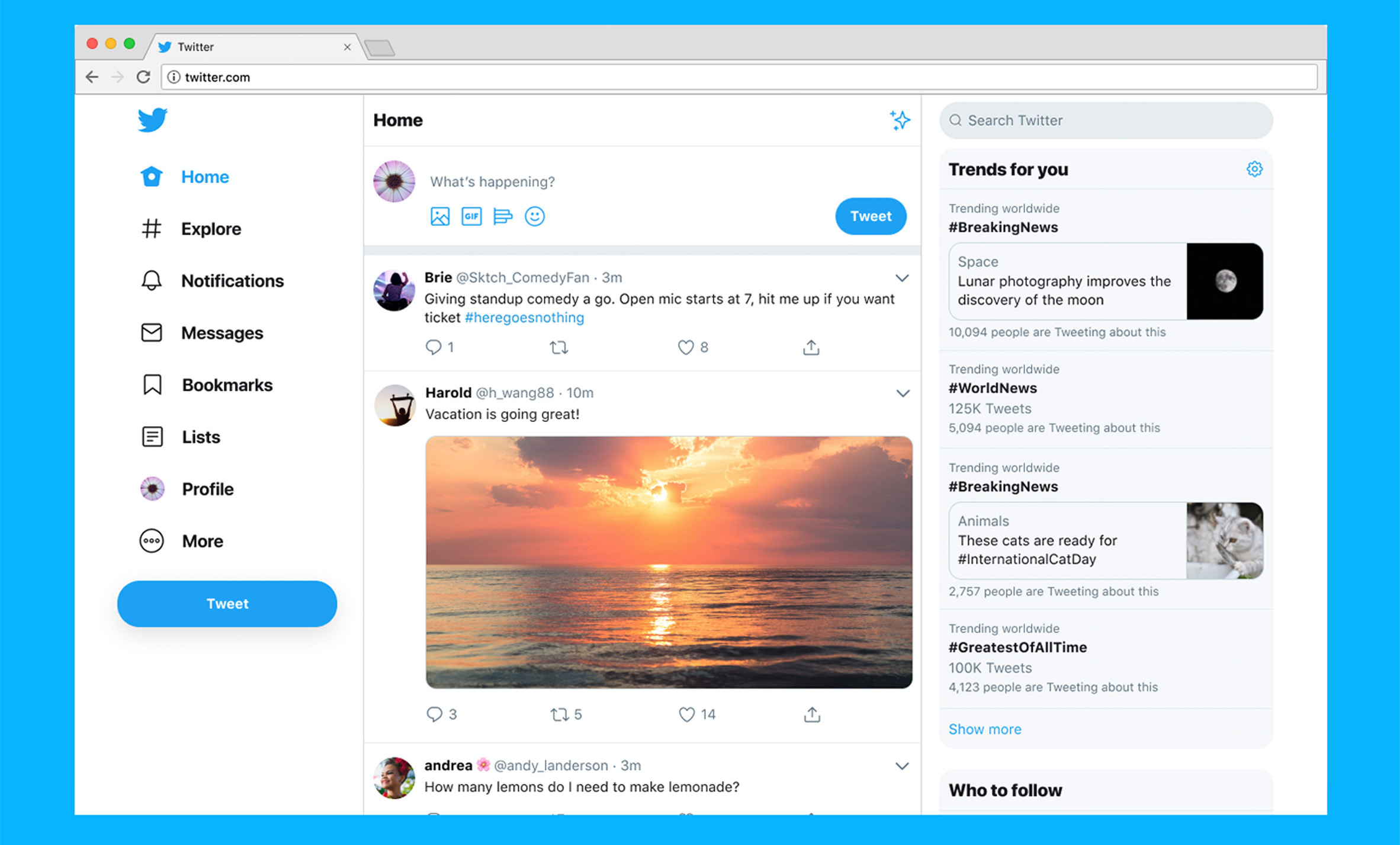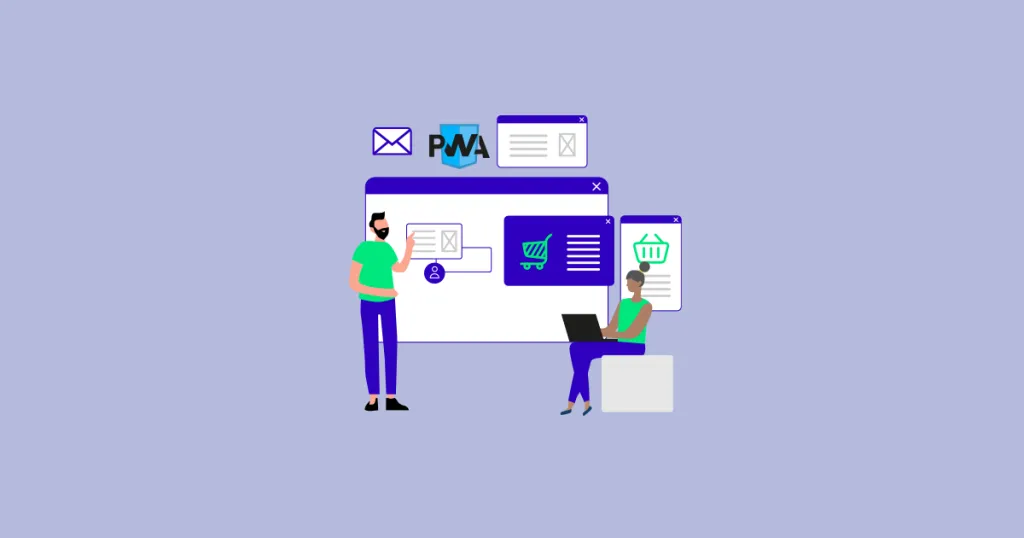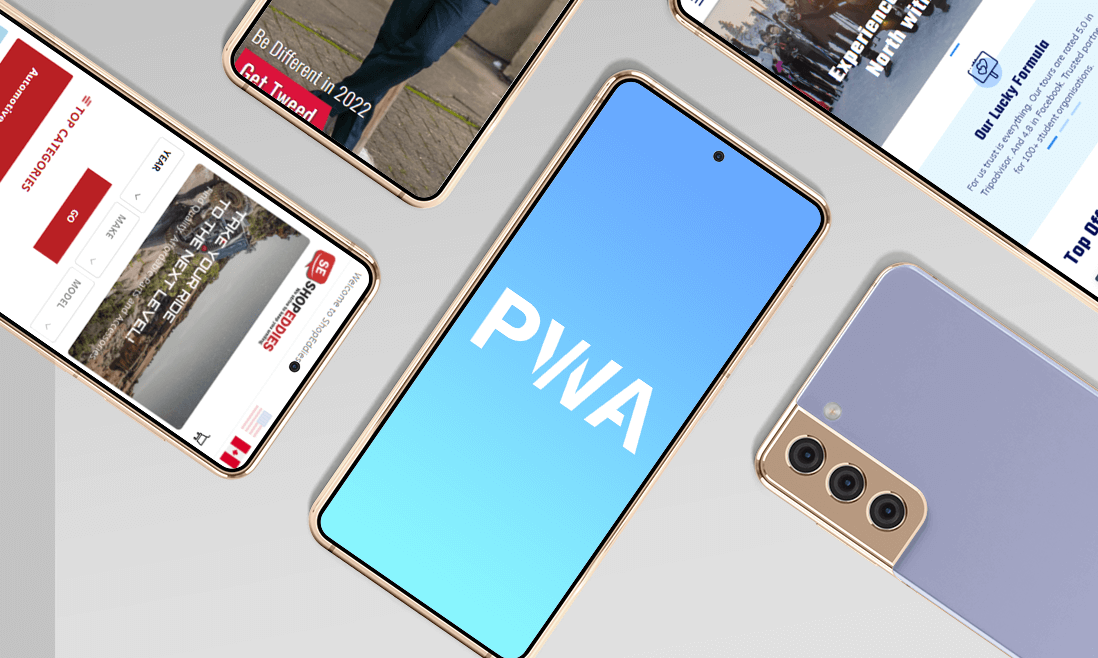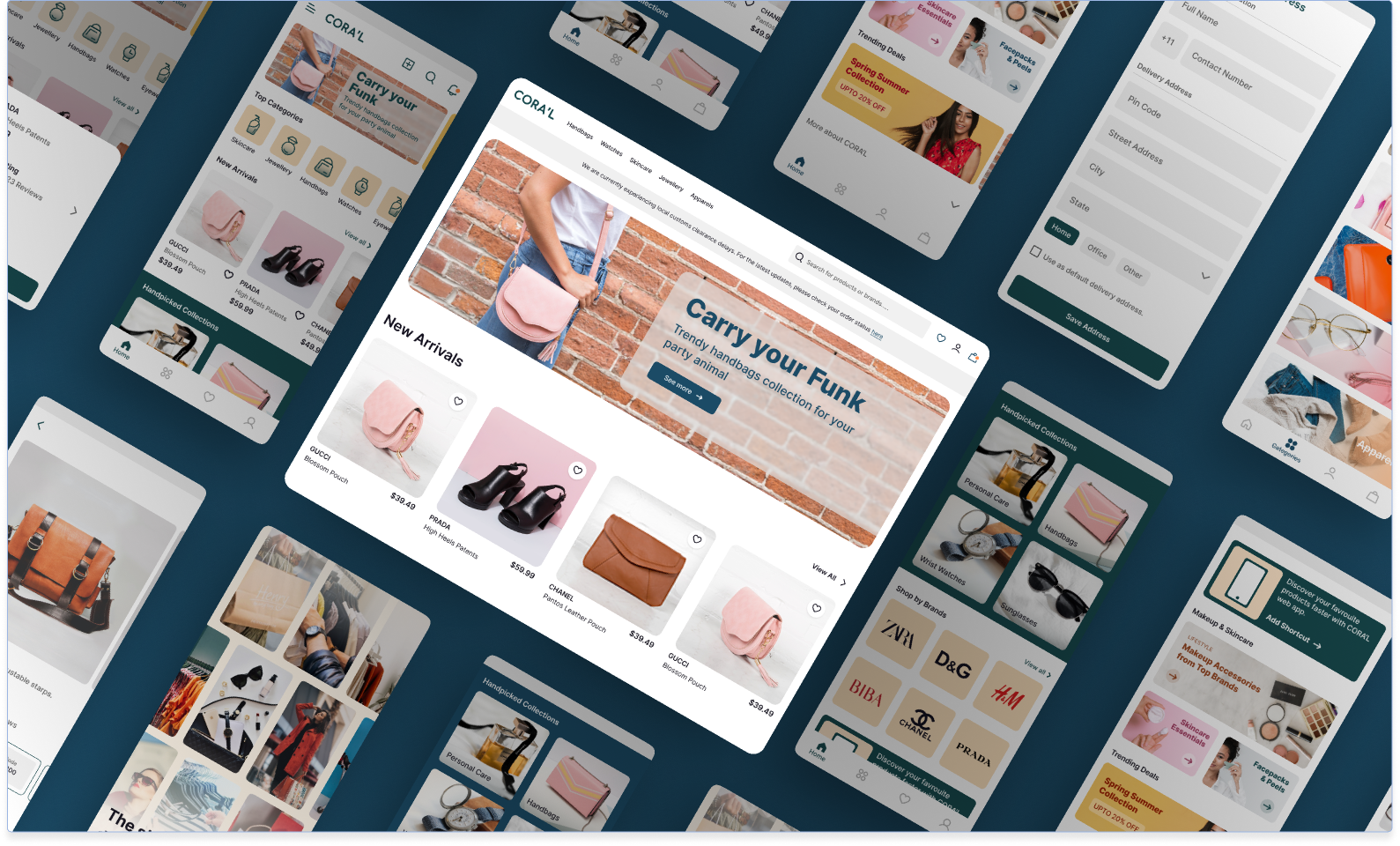Ecommerce PWA (Progressive Web App) have become a game-changer since their arrival in 2015. Major companies like Alibaba, Trivago, and Twitter have embraced this technology. Ecommerce PWAs bridge the gap between traditional websites and native apps, offering the best of both worlds: app-like features for a smooth shopping experience and website benefits like easy discoverability.
This guide is your one-stop shop for understanding Ecommerce PWAs. We’ll cover everything you need to know, from the core concept of PWAs to the practicalities of building and integrating an Ecommerce PWA for your business. Whether you’re starting from scratch with a brand new Ecommerce website or looking to enhance your existing site, this information will equip you to make informed decisions.
Ecommerce PWAs boast superior performance compared to traditional responsive websites. PWAs offer loading times that are at least 2-3 times faster, which is crucial for both customer satisfaction and search engine ranking. Google prioritizes faster websites in search results, making your store more discoverable.

 Taking a bold step, Lancôme launched a PWA-based site in 2016. The results were clear: a 50% performance boost compared to their old website, significant cost savings due to the PWA’s advantage over native apps, and a year-on-year mobile sales increase of 16%. Notably, faster site speed on Lancôme-usa.com even boosted their Google SEO ranking, solidifying their lead within the L’Oréal Paris group.
Taking a bold step, Lancôme launched a PWA-based site in 2016. The results were clear: a 50% performance boost compared to their old website, significant cost savings due to the PWA’s advantage over native apps, and a year-on-year mobile sales increase of 16%. Notably, faster site speed on Lancôme-usa.com even boosted their Google SEO ranking, solidifying their lead within the L’Oréal Paris group.
 Launched in October 2018, DW Shop’s PWA site capitalized on the power of Instagram, using it as a springboard to engage customers and drive them to the mobile-optimized website. This strategy yielded impressive results within a short timeframe. By leveraging PWA, DW Shop achieved a 75% traffic conversion rate, successfully turning visitors into customers with a seamless mobile experience. Their success story highlights the benefits PWA brings not only to traditional e-commerce but also to social media-driven businesses.
Launched in October 2018, DW Shop’s PWA site capitalized on the power of Instagram, using it as a springboard to engage customers and drive them to the mobile-optimized website. This strategy yielded impressive results within a short timeframe. By leveraging PWA, DW Shop achieved a 75% traffic conversion rate, successfully turning visitors into customers with a seamless mobile experience. Their success story highlights the benefits PWA brings not only to traditional e-commerce but also to social media-driven businesses.

What Exactly is a Progressive Web App (PWA)?
Imagine an app that blends the best of both worlds: websites and native apps. That’s essentially what an Ecommerce PWA is. Built with web technologies like Javascript, PWAs are websites at their core, meaning they have URLs and can be found on search engines. But here’s the twist: they offer an app-like experience. These “app-like websites” aren’t restricted to just mobile devices. You might have encountered PWAs on your desktop too. They all share some key features:- Reliable: They load quickly, even with a weak internet connection.
- Speedy: They react instantly to your taps and swipes, with smooth transitions between pages.
- Engaging: PWAs look and feel like native apps, creating a more enjoyable and interactive shopping experience.
The Rise of Progressive Web Apps
While Ecommerce PWAs are making waves today, the concept actually has a bit of history. Believe it or not, the idea wasn’t born at Google. Back in 2007, during the iPhone launch, Steve Jobs envisioned a future where developers could create apps built on web technology. This would leverage the existing web’s reach and avoid the need for app stores. However, Apple’s launch of the App Store in 2008 shifted the focus. Native apps took center stage, shaping how we use the web on mobile devices and solidifying the dominance of Apple and Google in the mobile space. Website owners, meanwhile, turned to responsive web design, ensuring their sites displayed well across different screens. In 2015, Frances Berriman and Alex Russell, who coined the term “PWA,” observed a new trend. Certain websites were offering an app-like experience, blurring the lines between web and app. These sites could operate independently of a browser tab while still retaining discoverability and searchability through the web. They dubbed these innovative creations “Progressive Web Apps.” Today, PWAs are gaining traction across various industries, including Ecommerce, thanks to the advantages they offer businesses and customers alike.Why Ecommerce PWA Is Great for Store Owners
Ecommerce PWAs offer a range of benefits that streamline operations for businesses while enhancing the customer experience. This technology is particularly attractive for store owners who want to save money and time, while simultaneously attracting more customers through a faster and more engaging website.Cost-Effective:
Compared to native apps, Ecommerce PWAs require a significantly lower investment for both development and ongoing maintenance. Unlike apps that require updates for new features and security fixes, PWAs eliminate the need for multiple apps across different platforms. This cost-saving advantage alone makes PWAs a compelling option for revamping your online storefront.Faster Development:
Similar to cost savings, PWAs offer a quicker development timeline for businesses. Existing online stores can transition to a PWA by focusing on rewriting the front-end, typically taking just 2-4 months. This is significantly faster than developing native apps, which can take up to 10 months for both Android and iOS versions. Additionally, PWA themes, like those available for Magento 2, offer even faster implementation, potentially launching your transformed website in weeks. This makes PWAs a great shortcut for startups or businesses with limited budgets to establish their online presence. Speedy Performance:
Speedy Performance:
Ecommerce PWAs boast superior performance compared to traditional responsive websites. PWAs offer loading times that are at least 2-3 times faster, which is crucial for both customer satisfaction and search engine ranking. Google prioritizes faster websites in search results, making your store more discoverable.
Engage with Push Notifications:
PWA push notifications allow you to send targeted updates and promotions to your customer base, keeping them informed about new arrivals or restocked favorites, without being intrusive. Users have control over notifications, ensuring a positive user experience.More Conversions, More Sales:
The smooth and app-like experience offered by PWAs translates to higher conversion rates. Studies have shown significant increases in conversions and user engagement after implementing PWAs.Work Even Without Internet:
Service Workers, a core technology behind PWAs, empower you to create customized offline experiences. This allows users to browse limited content and even add products to their cart, even when internet connectivity is weak or unavailable. Synchronization occurs when the user regains online access, ensuring a seamless experience. While a full offline experience isn’t feasible for complex functionalities, PWAs offer a significant improvement over traditional websites that become unusable without internet access. By eliminating the “connection failed” message and providing a cached version of your site, PWAs keep users engaged even when offline.How Ecommerce PWA Benefits Your Customers
Ecommerce PWAs offer a win-win situation for both businesses and shoppers. Let’s explore how these features directly benefit your customers.Feels Like a Native App
One of the biggest advantages of Ecommerce PWAs is the ability to add the website directly to your home screen, just like a native app. This translates to a significantly improved user experience with a smoother interface, faster loading times, and effortless navigation. But what truly sets PWAs apart is that they become an icon alongside your other apps, making it incredibly convenient for users to return. We’ve all been there – wishing there was an app for that great store instead of having to navigate through endless search results. With PWAs, that frustration becomes a thing of the past.A Better Shopping Experience
This aspect of PWAs benefits both businesses and shoppers. Faster loading times and a smoother overall experience allow customers to browse and find products quicker, ultimately leading to more purchases. Additionally, the improved user interface (UI) and user experience (UX) make navigating the website a breeze. Fewer technical glitches and a streamlined buying process mean less confusion for shoppers, ultimately leading to a higher conversion rate for your store.Optional App Store Download
While native apps have become ingrained in our online lives, having your store listed on the App Store or Google Play isn’t a requirement with PWAs. Trusted Web Activity (TWA) technology allows you to wrap your PWA in a native app shell, giving you the option to deploy it on either app store within a short timeframe. This eliminates the need to develop a full-fledged native app from scratch, saving you time and resources while still getting your brand noticed in the mobile app space.Save Storage Space
PWA apps are significantly smaller in size compared to their native app counterparts. We’re talking about a reduction of at least 80-90% in weight! This makes them a perfect solution for reaching customers who use devices with limited storage space. Users no longer have to worry about their favorite stores filling up their phones and slowing down performance.Ecommerce PWA vs. Native Apps vs. Responsive Websites
Choosing the right technology for your mobile store can be tricky. Let’s explore the strengths and weaknesses of Ecommerce PWAs compared to two popular options: responsive websites and native apps.Responsive Websites:
A cost-effective solution for dipping your toes into the mobile market, responsive websites automatically adjust their layout for different screen sizes. Imagine a website that seamlessly transforms from desktop to phone – that’s a responsive design. While budget-friendly, responsive websites can’t quite compete with the user experience and performance of native apps. Finding and accessing the mobile version through a browser takes extra steps compared to an app readily available on the home screen.Native Apps:
These familiar apps downloaded from app stores like Google Play or Apple App Store are designed specifically for a particular operating system. Leveraging a phone’s built-in features, they offer smooth performance and easy interaction. However, developing native apps can be a costly endeavor. Updates are essential to fix bugs and security issues, but they require user action. Additionally, native apps can gobble up precious storage space on a phone.The Showdown: PWA vs. Apps vs. Websites
Ecommerce PWAs bridge the gap between responsive websites and native apps, offering a compelling alternative. We’ll delve deeper into the specific benefits of PWAs in the next section.
Real-World Success Stories: Companies Winning with Ecommerce PWAs
PWA technology arrived as a game-changer, offering businesses a powerful tool to create superior user experiences with lightweight and budget-friendly mobile solutions. Early adopters who embraced this mobile-first approach gained significant advantages.1. Lancôme
Lancôme was at the forefront of this movement. In 2016, they recognized the rising tide of mobile traffic surpassing desktop usage, and knew they needed to adapt. Initially, building a native app seemed like the answer. However, the high development cost and the challenge of convincing users to download yet another app were drawbacks. Taking a bold step, Lancôme launched a PWA-based site in 2016. The results were clear: a 50% performance boost compared to their old website, significant cost savings due to the PWA’s advantage over native apps, and a year-on-year mobile sales increase of 16%. Notably, faster site speed on Lancôme-usa.com even boosted their Google SEO ranking, solidifying their lead within the L’Oréal Paris group.
Taking a bold step, Lancôme launched a PWA-based site in 2016. The results were clear: a 50% performance boost compared to their old website, significant cost savings due to the PWA’s advantage over native apps, and a year-on-year mobile sales increase of 16%. Notably, faster site speed on Lancôme-usa.com even boosted their Google SEO ranking, solidifying their lead within the L’Oréal Paris group.
2. DW Shop
DW Shop also recognized the need to bridge the gap between desktop and mobile experiences. With a growing mobile audience spending hours on their devices and a strong presence on Instagram (accounting for 90% of their traffic), DW Shop needed a solution tailored for smartphone users. PWA technology emerged as the perfect fit. Launched in October 2018, DW Shop’s PWA site capitalized on the power of Instagram, using it as a springboard to engage customers and drive them to the mobile-optimized website. This strategy yielded impressive results within a short timeframe. By leveraging PWA, DW Shop achieved a 75% traffic conversion rate, successfully turning visitors into customers with a seamless mobile experience. Their success story highlights the benefits PWA brings not only to traditional e-commerce but also to social media-driven businesses.
Launched in October 2018, DW Shop’s PWA site capitalized on the power of Instagram, using it as a springboard to engage customers and drive them to the mobile-optimized website. This strategy yielded impressive results within a short timeframe. By leveraging PWA, DW Shop achieved a 75% traffic conversion rate, successfully turning visitors into customers with a seamless mobile experience. Their success story highlights the benefits PWA brings not only to traditional e-commerce but also to social media-driven businesses.
3. Twitter
Twitter is another example of a successful PWA implementation. Launched in 2017, Twitter’s PWA offered a more effective way to re-engage users with the platform. User behavior reflects the app’s effectiveness: 250,000 daily visitors launch the Twitter PWA directly from their home screen, averaging four visits per day. Twitter Lite, the PWA version, has become the fastest, most cost-effective, and data-saving way to access Twitter. It reduces data consumption by up to 70% and boasts a compact size of just 600Kb compared to the hefty 23.5MB native app.







 Speedy Performance:
Speedy Performance: